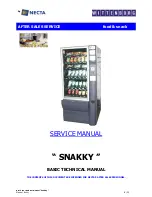
222
The upper thread comes out of the needle when
embroidering begins.
If a short length of thread remains after the
thread is trimmed, the needle may become
unthreaded when embroidering begins again.
• Set the remaining length of thread to “Long
Tail” on the second page of the settings
screen.
p.185
The upper thread does not reach the bobbin thread when
embroidering begins.
There is no more thread in the bobbin, the
thread does not feed from the bobbin, or the
thread that is fed from the bobbin is too short.
• Correctly thread the lower thread.
p.33
Although the thread is not broken, a broken thread error
occurs and the machine stops.
If the thread breakage sensor in the thread
tension disc of the thread tension knobs cannot
detect that the thread is being fed, even if the
machine is running, a broken thread error
occurs and the machine is stopped. If the thread
came out of the thread tension disc, even
though the thread is not broken, the machine
detects that the thread is not being fed and
stops.
• Clean the tension unit. Correctly pass the
thread through the thread tension disc. If the
broken thread error occurs after the machine
is cleaned and rethreaded, the sensor may be
damaged. Consult your nearest authorized
Brother dealer.
p.52
p.213
The thread is worn.
Lint or dust has accumulated in the thread
tension disc.
• Remove the tension dials, and then remove
any lint or dust accumulated between the felt
washers.
p.213
Jumpstitches are long.
Lint or dust has accumulated in the thread
tension disc.
• Remove the tension dials, and then remove
any lint or dust accumulated between the felt
washers.
p.213
There are needle cuts or holes in the garment.
The needle is dull.
• Replace the needle. Dull needles have a
difficult time passing through the garment,
causing fabrics to tear.
p.30
p.79
The fabric is too delicate.
• The simple penetration of the needle could
damage delicate fabrics. Use stabilizer on top
of fabric.
p.204
Symptom
Probable Cause/Remedy
Page
There is puckering in the fabric.
The thread tension is too tight.
• Adjust the tension according to the type of
fabric and thread being used. Polyester
thread will stretch during sewing especially if
the tensions are set too high. After the
stitching is complete, the thread returns to its
original strength, causing puckers in the
fabric.
p.103
The framing tension of the fabric is incorrect.
• Tightly frame non-stretchable, woven fabrics.
Loose framing will cause the fabric to bunch
up under the stitching.
Tautly frame soft knits using a stable backing.
Overstretching the garment will cause it to
look puckered when the frame is removed.
p.203
The column stitches are too long.
• Re-digitize the design with fill stitching or
with multiple rows of column stitching.
–
There is puckering in the fabric.
The needle is dull.
• Dull needles push fabric down and damage
material. Replace the needle.
p.30
p.79
The design density is too heavy.
• Too many stitches in an area pull fabric,
causing it to pucker. Slightly decrease the
design density by 5% to 10%.
p.184
The LCD cannot be read.
The LDC screen is too bright or too dark.
• Adjust the brightness of the screen display.
p.179
When embroidering thick fabric, the fabric cannot be
correctly hooped.
Fabric slips within the frame because of its
thickness.
• Wrap masking tape or bias tape around the
outer frame. The tape will provide resistance
so that the fabric does not easily slip.
p.203
CAUTION
• This machine is equipped with a thread
detecting mechanism. If the machine is not
threaded with the upper thread, the machine
will not operate correctly, even if the start/
stop button is pressed after unlocking the
machine.
• If the machine suddenly stops:
• Turn off the machine, and unplug the power
cord.
• Restart the machine with the correct operat-
ing procedure. Refer to page 35.
Symptom
Probable Cause/Remedy
Page
















































